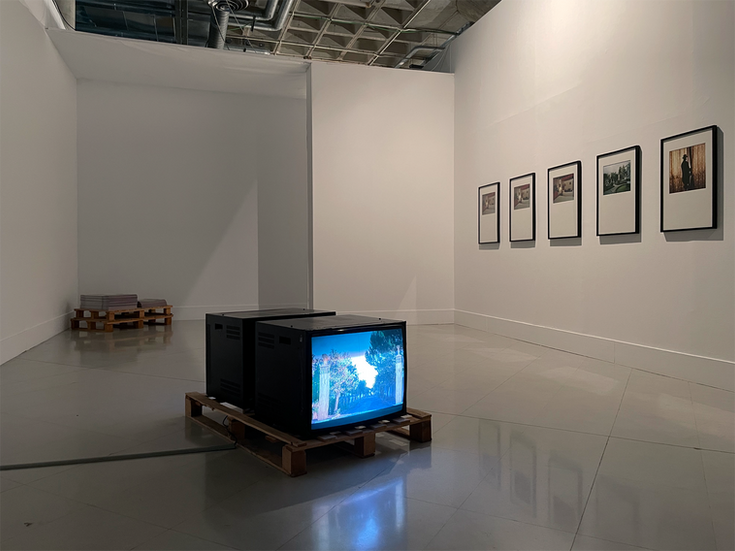- anacatarinapinho.com
- 7 de set. de 2021
- 3 min de leitura
Atualizado: 13 de out. de 2024

10 SET - 31 DEC 2021 EXTENDED UNTIL JAN 24, 2022
MEIAC, BADAJOZ, SPAIN — EXTREMADURAN AND LATIN AMERICAN MUSEUM OF CONTEMPORARY ART LINK
The exhibition examines the fictional layers behind the iconographic construction of the Portuguese colonial empire, while also reconsidering the crucial role that technical images play in shaping our perception of reality. Through the work of five contemporary artists, it challenges imperial legacies by interrogating the issues these images raise. The exhibition exposes the narrative fabrications that sustained nationalist ideologies, and in doing so, it brings forth the silences and specters of the colonial past that continue to echo in the present.

The exhibition presents works by Portuguese artists Daniel Barroca (1975), Filipa César (1975), Manuel Botelho (1950), Paulo Mendes (1966), and Susana de Sousa Dias (1962), who reframe the Portuguese dictatorial past by appropriating images produced during the Estado Novo (New State, 1933-1974)—an authoritarian and colonialist regime. These artists challenge the official narratives embedded in the regime’s visual documentation, activating institutional archives as well as vernacular collections of the time. Through juxtaposing different temporalities, they offer critical reflections on the heritage and enduring traces of the dictatorial past. Their reappropriation and resignification of these images address the unresolved issues of the past that continue to resurface in spectral forms today.
The regime’s nationalist discourse promoted the idea of Portugal as a unique, pluri-continental, and multi-racial nation, a notion fabricated through fictional reinventions of historical reality. This was orchestrated by a propaganda machine that controlled what the regime wanted to be seen, deeply transforming the perception of history, time, and identity for generations of Portuguese people. While the Estado Novo sought to assert itself through territorial expansion and overseas occupation, as represented in the map Portugal is not a Small Country which opens the exhibition, it was on these very territories that the regime ultimately saw the beginning of the end for its empire.
The exhibition opens by addressing the pursuit of imperial territory and the complexities of the Colonial War. The works of Manuel Botelho and Daniel Barroca, though distinct in their processes, complement each other in their exploration of the visual memory of the war. Botelho transforms vernacular photographs into politically charged objects that give voice to the anonymous, while Barroca fragments personal family album images, examining the limits of representation and the memory of historical experience.
On a similar critical trajectory, the works of Paulo Mendes, Susana de Sousa Dias, and Filipa César challenge official narratives. Mendes questions the political limits of history and national memory, evoking the haunting specters of Salazar’s rhetoric and a regime that unconsciously persists in the present. Susana de Sousa Dias dissects the dictatorship's propaganda machine, exposing its mechanisms and turning the official discourse against itself by highlighting overlooked details that offer new interpretations. Filipa César engages with both colonial and colonized narratives, layering different perspectives to subvert the imperial consciousness once presented in images, allowing the voice of the once-silenced colonial subject to emerge.
The exhibition reflects on ongoing debates surrounding imperial heritage, which have gained renewed global interest in the 21st century. Rather than focusing solely on what the images depict, it examines what they invoke, uncovering the constructed narratives that supported imperial ideologies. At the same time, it highlights the silences and specters of the past that continue to resonate today. Through the lens of contemporary art, the exhibition invites viewers to critically revisit and rethink Portugal's imperial past, offering a space for reflection and dialogue.













































